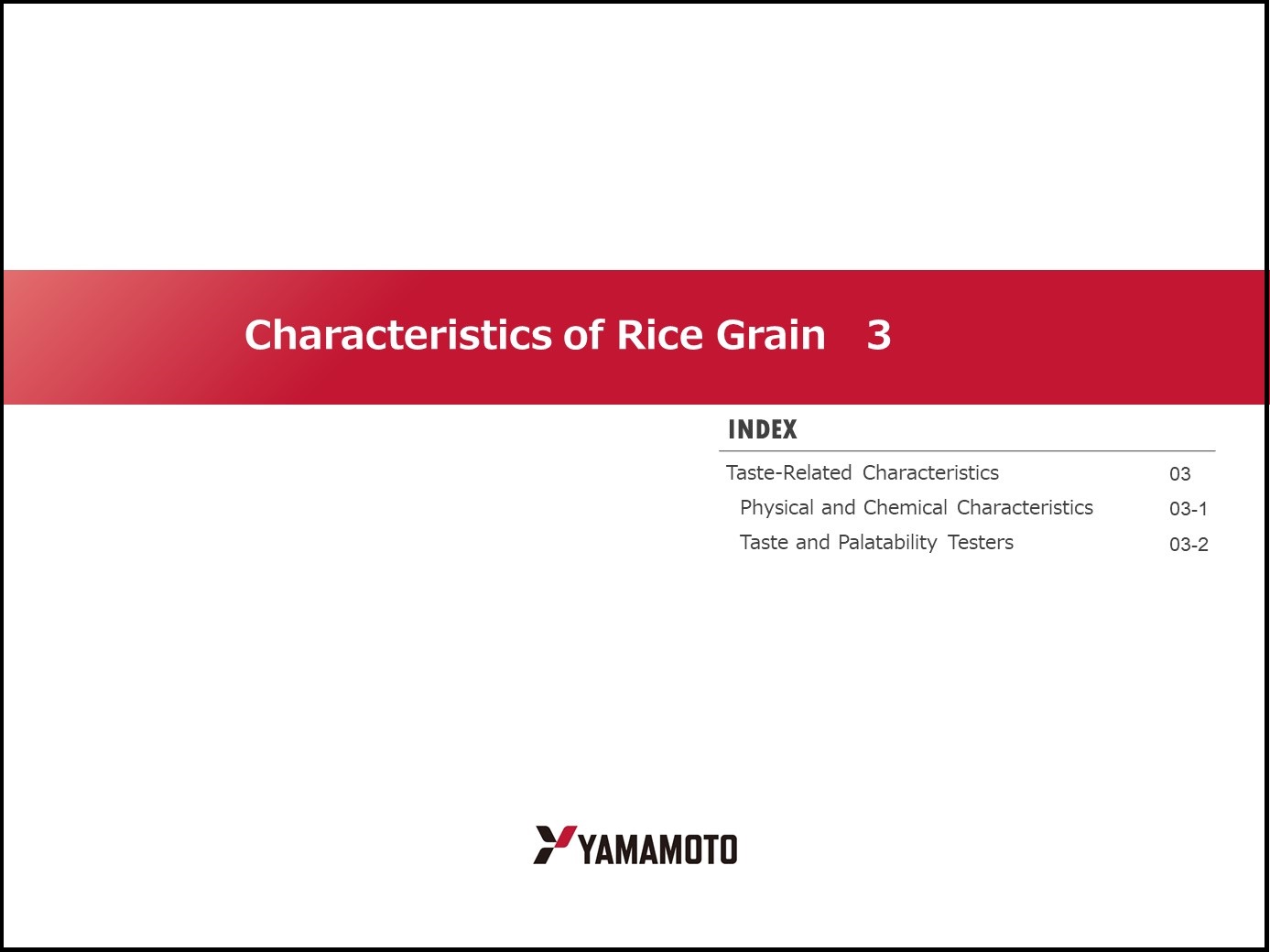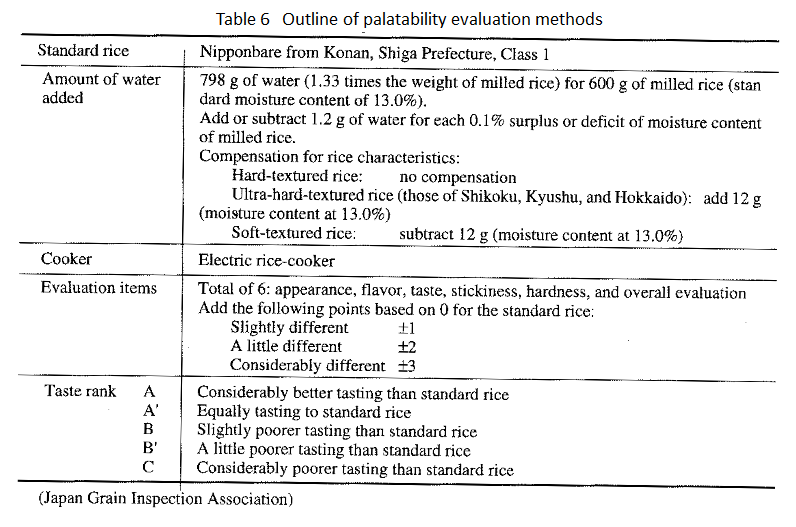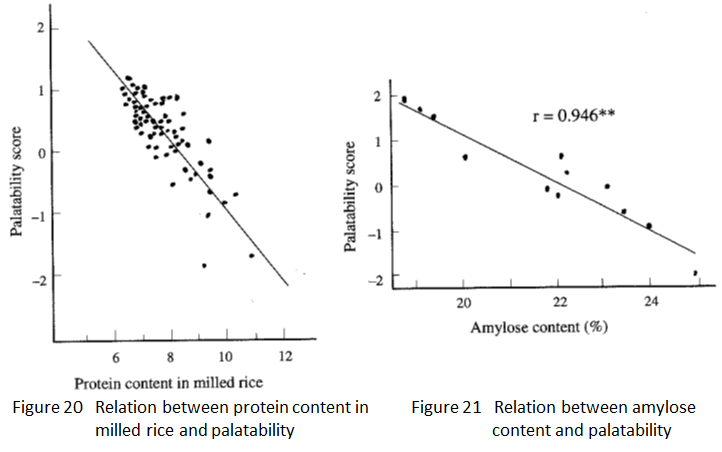10. Characteristics of Rice Grain 3
- INDEX -
Taste-Related Characteristics
Physical and Chemical Characteristics
Taste and Palatability Testers
Taste-Related Characteristics
Physical and Chemical Characteristics
Palatability is commonly measured by sensory test. Taste is rated on 6 items against those of standard rice: appearance, flavor, taste, stickiness, hardness, and overall evaluation (Table 6). The sensory test, however, depends on panelist’s personal senses and therefore does not necessary provide an objective evaluation. Hence the necessity of physical and chemical evaluation methods remains.
Physical method:
This is to describe the taste characteristics of cooked rice or rice powder by means of such characteristic indices as viscoelasticity, gloss, cooling degree (viscosity increase during cooling) of gelatinized starch, alkali reaction index of rice grain, and the like. It uses the texturogram, the amylogram, the swelling volume of cooked rice, the dissolved solid of cooked rice, etc. The method of measuring the gloss of a small amount of cooked rice using a whiteness tester is used for screening of breeding practice due to its ability to measure a large number of samples. These methods are highly correlated to taste, since they measure the characteristics of cooked rice, but they require a cookable volume of sample rice.
Chemical method:
This is to estimate the grade of taste based on the chemical composition, such as amylose, protein, and inorganic substances contained in rice grain. Protein (or nitrogen content) has a high degree of negative correlation to taste for Japanese people. It is common knowledge that excessive use of nitrogen fertilizer may increase rice yield but may deteriorate its taste (Fig. 20). Amylose is another substance that is highly correlated with taste (Fig. 21). It is also known that the inorganic substance content ratio (Mg/K ratio) affects taste, and its correlation increases when combined with the ratio of nitrogen content (Fig. 22). As to flavor and good taste, free amino acid is believed to contribute positively. These components are advantageous in that a small sample is adequate for testing.


